
Secondary minerals formed in the upper portions of the ancient silver mines of Laurium in Greece on display at Carnegie Museum of Natural History in Pittsburgh.
Carnegie Museum of Natural History
One of the Four Carnegie Museums of Pittsburgh
by wpengine

Secondary minerals formed in the upper portions of the ancient silver mines of Laurium in Greece on display at Carnegie Museum of Natural History in Pittsburgh.
by wpengine
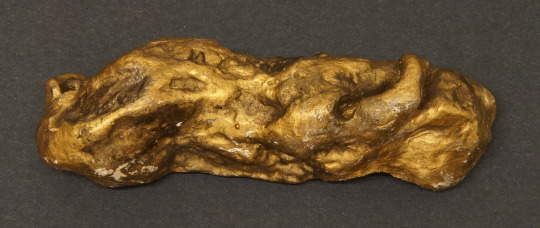
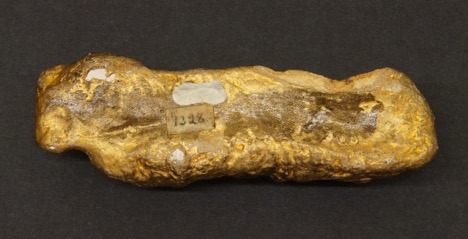
by Debra Wilson
The identity of this gold nugget has been lost to time. This is a plaster cast of a gold nugget which is housed in the Mineral Section of the Carnegie Museum of Natural History. It is believed to be one of six casts of famous gold nuggets acquired by the museum from Ward’s Natural Science Establishment in 1897. This specimen (CM33100) measures 12.8 x 3.9 x 2.9 cm (Photos by Deb Wilson).
The only identification for this nugget is the number “1328” affixed to the back of the specimen. Ward’s was known for producing and selling plaster casts of famous gold nuggets; they even exhibited a number of them at the Chicago World’s Fair in 1893.
The original documentation from the acquisition of the six gold nugget models cannot be found in the museum’s archives, except for a reference on page 56 of the Annual Report of the Carnegie Museum for the Year Ending March 31, 1899, which states “Casts of six gold nuggets and of 12 meteorites purchased October 20, 1897, from Wards Natural Science Establishment. Accession 419, 1-18.”
What is known about the other five gilded plaster casts is:
· “Ural” or “Great Triangle” nugget. Found at Taschku-Targunk, Ural Mountains, Russia, in 1842. Weight of original 100 lbs. Wards #1214, CM16711.
· “Welcome” nugget. Found at Bakery Hill, Victoria, Australia on June 11, 1858. Weight of original 2,166 ounces. Wards #1471, CM16710.
·“Oregon Canyon” nugget, Found near El Dorado City, California, USA, prior to 1866, Weight of original unknown. Wards #1473, CM33103.
·“Spondulix” nugget. Found at Eureka Gulch, Victoria, Australia in November, 1872; Weight of original 155 oz. Wards #1458, CM33101.
·“Homebush” nugget. Found at Homebush, Victoria Australia on March 24, 1880. Weight of original 80 oz., Wards #1467, CM33102.
If you have any information that may help identify which “famous” gold nugget this is a replica of, contact Debra Wilson, Section of Minerals, wilsond@carnegiemnh.org .
(Initial research done by museum volunteer David R. Alison)
Debra Wilson is collections assistant in the Section of Minerals at Carnegie Museum of Natural History. Museum employees are encouraged to blog about their unique experiences of working at the museum.
by wpengine
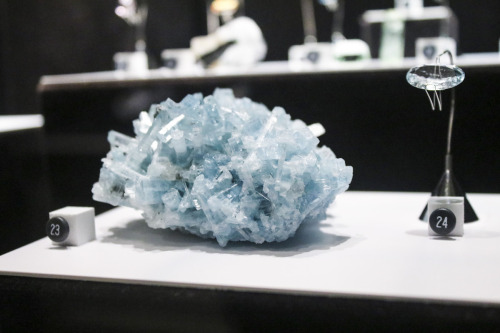
by wpengine
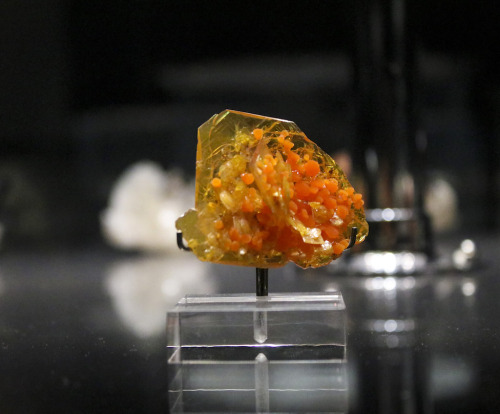
by wpengine
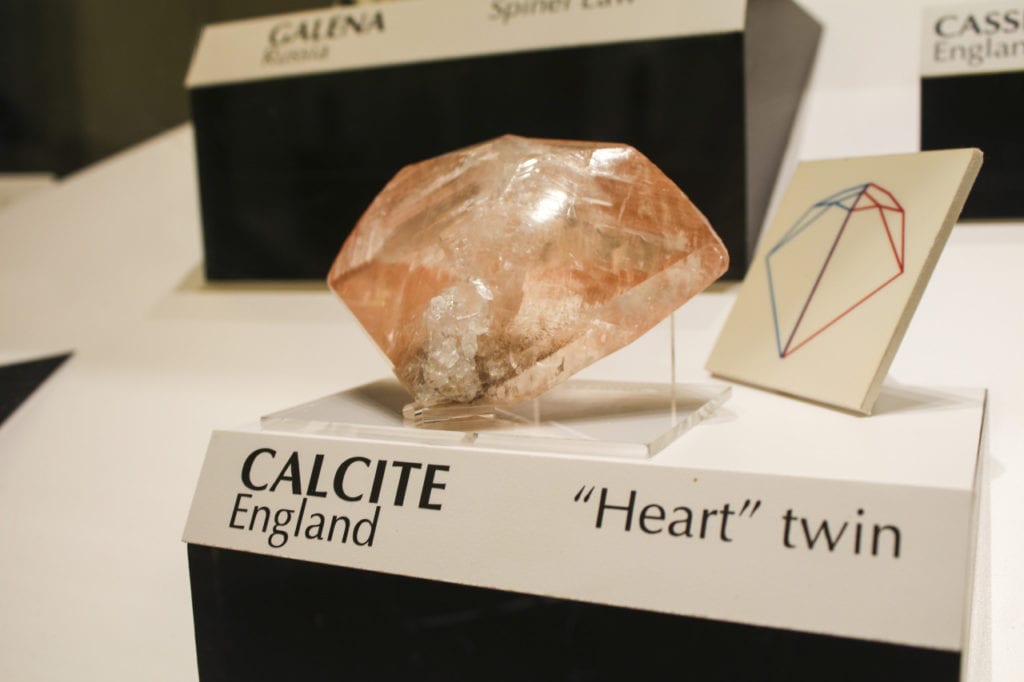
Calcite, sometimes referred to as “heart twin” on display in Hillman Hall of Minerals and Gems. Contact twins occur
when two or more crystals grow in contact with each other.
(Photo by Hayley Pontia)
by wpengine
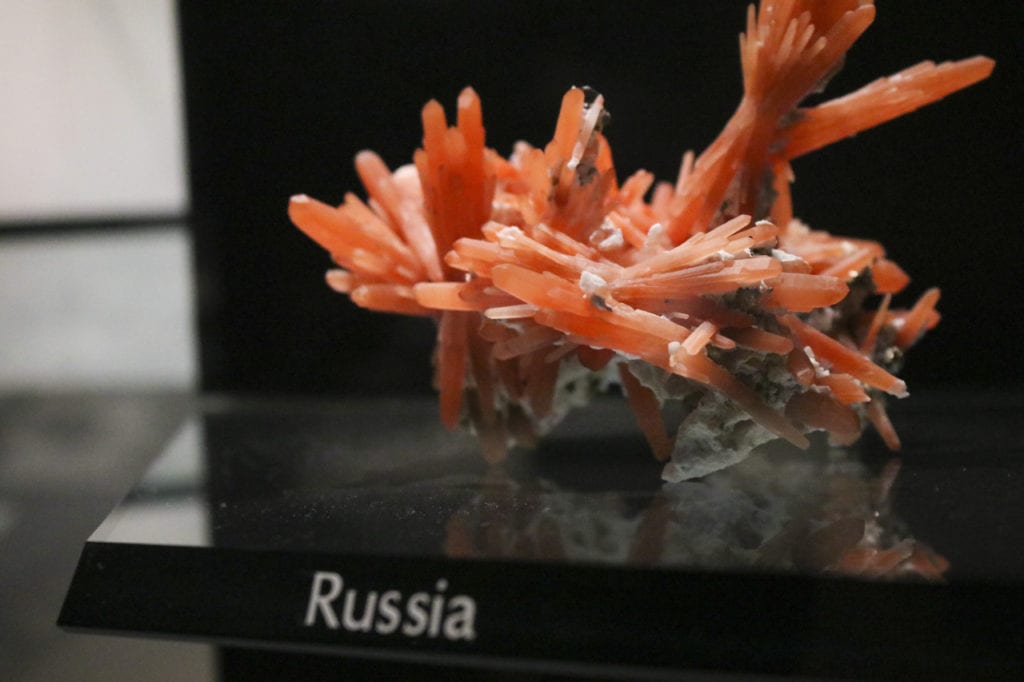
This quartz crystal was found in Russia and has its bright color due to small concentrations of chemical impurities or inclusions of other minerals.
(Photo by Hayley Pontia)
